The beginner's guide to Social Media: Part 2 Twitter and Retweeting
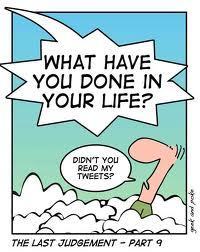 Welcome to week 2 of The Beginner's Guide to Social Media. There was such a positive response to last week's blog that it is obvious many of you are floundering it the Twitter-verse, wondering what to do next. Hopefully you have your head around the basics now. You know what a follower is and how to follow people. You know what tweets and retweets are. You should also know how to mention someone on Twitter, how to direct message them (and when not to DM) and what the basic function of hashtags are.
Welcome to week 2 of The Beginner's Guide to Social Media. There was such a positive response to last week's blog that it is obvious many of you are floundering it the Twitter-verse, wondering what to do next. Hopefully you have your head around the basics now. You know what a follower is and how to follow people. You know what tweets and retweets are. You should also know how to mention someone on Twitter, how to direct message them (and when not to DM) and what the basic function of hashtags are. If you were good students, you would have spent the week practicing your newfound Twitter skills.
So what next? I'll apologize in advance, as there is quite a lot of content this week. I've tried to break it up into bite size chunks. Feel free to bookmark it and read at your own pace. And as always, please feel free to pass on my blog.
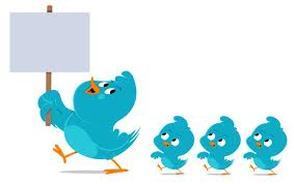 INCREASING YOUR TWITTER FOLLOWERS
INCREASING YOUR TWITTER FOLLOWERSNow that you have your head around following other people, you are ready for the next step - getting people to follow back.
Why do you want more followers?
Well, Twitter is a little like a schoolyard clique. The more popular you are, the more people want to hang out with you and follow you around. The more people follow you around, the more they retweet your tweets and spread the word about you. The more people hear about you, the more people discover your books. The more people discover your books, the more sales you generate and the more money you make.
Simple, huh?
So how do you become one of the popular kids?
It's not as hard as it seems. You follow people and hopefully, they follow back.
Before I go any further, let me just make it clear that I'm no expert. Like you, I am stumbling my way through the Twitter-verse, finding out information as I go and sharing it with my friends. In terms of followers, I'm not in the Too Cool for School group yet. But at 3.5K followers, I've made it out of the Geek Squad and am making my way up the Clique Ladder.
In the Twitter-verse, anything less than 1000 followers is considered small. Once you break into triple numbers, the followers will flock to you. The more followers you have, the more people want to jump on your fast-moving bandwagon. Juvenile - sure. But that's the way it all works. Look at the mega-popular kids. The real celebrities.
The biggest hitters on Twitter are:
1. Lady Gaga with 32,911,170 followers.
2. Justin Bieber with 32,820,740 followers.
3. Katy Perry with 31,067,793 followers.
4. Rhianna with 27,774,124 followers.
5. Barack Obama with 25,681,676 followers.
Now slow down. I'm not suggesting you will knock Gaga off her Twitter Throne but by following a few hints and suggestions, you will see your follower numbers grow.
Last week, I touched a little on following like minded people. For example, as authors, the easiest way to add to our followers list is to follow other authors. It's a great community and most of them will follow you back.
So let's assume you added some authors and they have all followed you back. Your Twitter numbers are growing but it's done nothing for your sales yet.
Let's get one thing straight. Authors are not your target market. If they are anything like me, they're not going to buy your book, no matter how many times you DM them your book links, or invite them to your book launch. At best, they'll retweet your posts. They might even like your book page for you. But part with their hard-earned money... Not likely.
So why add authors if they're not going to make you any money?
Simple. It's a 'you scratch my back, I'll scratch yours' scenario. It's a symbiotic partnership - you're part of the Author Force, following each other and helping to drag each other out of the Geek Squad into the Too Cool for School group.
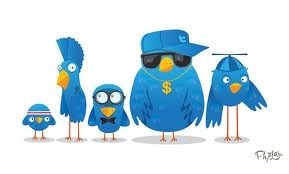 So how do you grow your Twitter community beyond authors? How do you target readers? How do you find people who will actually buy your book?
So how do you grow your Twitter community beyond authors? How do you target readers? How do you find people who will actually buy your book? Heading back into your #Discover link on Twitter, try your hand at searching Book Clubs and Book Reviewers. Both are reader-centric and put you in touch with people who are searching out good books. Don't forget to switch the search field to People, not Tweets (in the top left hand corner if using Twitter on a PC. On the bottom of the screen if using Twitter on an iPhone).
Follow a handful of book clubs and book reviewers but also follow the people who follow them, as they are obviously in the market for good books and book reviews. These are your target market.
Next, find your favourite authors on Twitter, or authors who closely resemble your style. For example, just say you've written the next thing to rival Harry Potter. Search for JK Rowling and then click on her name. It will open up her profile (make sure you get the real JK Rowling, indicated by a blue tick for official). Now click on her followers list. Don't bother adding JK unless you are really interested in reading her tweets, as she doesn't tend to follow back (has one person she follows - and that's her Pottermore profile). Over 1.5 million people follow JK Rowling, and of them, you would assume a large portion are Potter fans. Be selective - find the people who say they are Potter fans in their profile. Follow them. If your profile gives some indication of the type of books you write, you may just find some hungry new fans looking for a new set of books to read.
You can take this a step further. Just say you've written a new paranormal series in the same vein as Supernatural. Or a zombie book. Find television shows and movies in the same genre. Check out their followers. For the most part, these are people already interested in the genre and therefore, more likely to be interested in your books. Take it a step further and take part in the discussions surrounding these TV shows and movies. Remember the #hashtags I told you about last week? Well this is where they really come into their own. That way, you can get chatting to Supernatural fans by hanging out in the #Supernatural threads. You can friend romance fans by spending some time in the #romance threads. Or searching threads on the latest romance movies. This is far more likely to be successful if you are specific in your searches. Target who you follow. It goes without say that if you write erotica, don't bother searching for readers on the Harry Potter sites.
Don't limit it to just your books either. If you enjoy watching Survivor on TV, check out the #Survivor discussion groups and get chatting to other fans. You can follow people this way or just reply to their posts, and let them follow you if they think you're someone interesting. I'm sure you get the picture. The sky is definitely the limit. I've found some of my most interactive followers by participating in threads that had nothing to do with my books. For instance, football threads when watching games live on TV, current affair threads while watching things like 60 Minutes. Or chatting to other fans of reality TV shows like The X Factor and The Voice. The brilliant thing with these threads is they are often real time, i.e., the people are online, tweeting at exactly the same time you are and are far more likely to respond immediately - and hopefully, follow immediately.
Don't forget the non-Twitter way of getting followers too.
Make it easy for people to follow you. Make sure you list your Twitter address everywhere you can. In your email signature, on your website, on your Goodreads profile, on Facebook, on your blogs, on your business cards, on the back cover of your book... Make sure everytime someone looks at your work, they know how to find you on Twitter (and everywhere else).
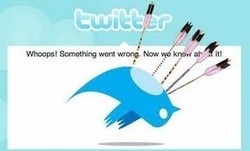 Follower limits
Follower limitsWhen you first start out on Twitter, you can follow up to 2000 people with no limits. Consider the first 2000 a grace period - Twitter is giving you a chance to get popular. They're giving you 2000 invites to your new Twitter Party.
But now that you've followed 2000 people, Twitter start imposing limits on you.
So just what are those limits and are there ways around them?
It's all about ratios. Using the party analogy, you've sent out 2000 invites but only got 100 RSVPs. Twitter won't let you send out any more invites until your party is looking a little more healthy.
Now you can sit back and hope and pray the 1900 people who didn't RSVP just forgot to do so, or were a little slow in getting around to it. You can wait for them to come to the party - but what if they don't? What if they found a better party to attend and have no intention of coming to your little shindig?
Well, you either stay at 100 forever, never able to grow your Twitter party beyond that, or you do what the Too Cool for School group do. You uninvite all those rude people who didn't RSVP.
Think about it this way - you retract those 1900 invites and all of a sudden you have 1900 invites to send to other people who may just think your party is the most happening place in the Twitter-verse. Rehashing the 'how to get followers' steps above, you sending out your 1900 invites (follows) to new people, keeping the 100 partygoers you already had.
There are a couple of ways to unfollow. You can do it the old school way, and that is to click on your Following List and then individually click every single person you invited and see if they are following you back (If you bring up their profile, it will say whether they follow you or not next to their username). Believe me, if you've got to uninvite 1900 people, this is not the way to do it. You will be there forever. It is, however, free and you can unfollow as many people as you want to in a day.
But there are heaps of easier ways to unfollow.
JustUnfollow - sign up with your Twitter account and JustUnfollow will let you automatically see the people who didn't RSVP to your party. On the left hand side of the page, click the Non-Followers list. Make sure it is showing the Oldest First (that way you don't unfollow the people you only just invited - you only unfollow those who have had plenty of time to respond). The free version of JustUnfollow will let you unfollow up to 50 people in a 24 hour period. For most of you, that will be perfectly fine. Just set a reminder and come back at the same time every day and unfollow another 50 non-followers - automatically giving you another 50 invites. If you do this when you first start inviting people to the party, you make your job even easier. Usually, allow people a week to respond - two at the most. If they still haven't followed you, chances are, they won't. Unfollow them and choose someone else.
If you don't want to take a month to uninvite the whole 1900, then you might want to consider the paid version, which allows you to unfollow as many as you like. It's $9.99 a month but if you want to build your numbers on Twitter quickly, this might be the way to go.
JustUnfollow has some other cool features as well. It allows you to see who is a fan of your work, to see who your inactive followers are (those who follow but don't ever interact with you) and to copy other people's follow lists.
There are a number of similar programs on the market. Most have a free version and charge you if you want the unlimited version. It's a matter of Googling them but here are a few more you might like to check out.
Qwitter - emails you whenever someone unfollows your account.
Who Unfollowed Me
IUnfollow
UnfollowersMe
ManageFlitter
Once you get 2000 people to attend your Twitter Party, Twitter releases a few more invites. As a general rule, as long as you keep your Follower/Following ratio at 10%, you can keep growing your Party.
For instance, once you reach 2000 followers, Twitter will give you another 200 invites to send out, and as long as you never go outside that ratio, you can keep inviting people until you start closing in on Gaga's Throne. The higher up you list you go, the more invites you have up your sleeve. For example, I have 3500 followers, which means I have 350 invites up my sleeve. If I had 10,000 followers, I'd have 1,000 invites up my sleeve. At 100,000, you have 10,000 and so on and so forth.
Not too hard to understand. You will always have a few accounts who will never follow you back - especially if you want to keep up-to-date with news or what the celebs are doing. Just keep them within your ratios and you'll be fine.
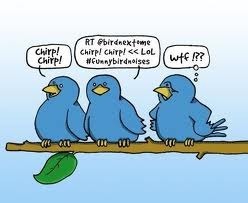 Keeping Followers
Keeping FollowersIt's one thing to get followers, quite another to keep them.
How do you ensure people stay at your Twitter Party?
Easy - make it a fun place to be.
Imagine you get invited to what you think is going to be a cool party but when you arrive, you find out it's really just a Network Marketing Meeting. There's no beer, no cool music. Just a million sales pitches and strong-arm tactics to get you to buy their product.
What are you going to do? You're going to look for the nearest exit and the fastest way out of there. Right?
That's exactly what your followers will do if the only thing you Tweet about is your book. They'll find the nearest exit and slink away without ever buying a thing - and they'll think worse of you for inviting them there in the first place.
If you want to succeed in the Twitter-verse, you have to accept one very important thing - Twitter is social media. And you know what social is right? It's not sales? It's not a mini-catalogue for your products. It's interacting with other people. And interacting is a two-way street.
Let's go back to the Top 5 Twitter accounts.
You think Lady Gaga got almost 33 million followers by begging people to buy her albums? No. Gaga got popular because she understood what her army of fans wanted. They wanted to know what was happening in her life. Now I'm not suggesting you post Tweets about your bathroom habits, or that you feel the need to tell people everything you ate today. There is such a thing as sharing too much.
Gaga shares things with her fans. She tells them what music she's listening to (why, because people care what a music guru is listening to - they might not care what you are listening to though). She tells them when she's rehearsing. She wishes her friends and family a happy birthday. She shares photos with them. She shares other people's tweets with them.
Do you get it yet? She's letting her fans into her world, giving them a glimpse of her they wouldn't get to see any other way.
So how does that translate to you, as a writer?
Well, in my experience, people still want to get to know you. They are far more likely to buy your books is they have developed some kind of 'relationship' with you than just because you tell them to a hundred times. Tell them what you're reading (and no, not just your own books). Tell them interesting places you've been to see. Share a photo of a beautiful sunrise or sunset. Let them into your writing life. Did you struggle this week with getting words on paper? Tell them. Let people see you as a real human being. Interact with them. Chat. Encourage responses. And if people take the time to answer you, make sure you answer back.
I used to personally thank every new follower I got, making a personal comment about them. For instance, if they were an author too, I wished them good luck with their book - maybe even mentioned that book by name - I showed them I was interested in them as more than just a number on my Twitter lists. I interacted. If a fan of a TV show I watched followed me, I'd engage in conversation about that show. Maybe talk about last week's episode. Those early followers are still with me now.
Unfortunately, I cannot do that any longer. Now that my account has grown - on average, I have about 100 new followers a day - the logistics of responding to every single person is beyond me. If I did that, I'd spend all my day on Twitter and never release another book. I do, however, still try to respond back to people when they comment, favourite or retweet my Tweets. It doesn't take too long, especially as I have it on my iPhone.
Another way to make your tweets interesting is to share information. Did you read a blog on writing this week that your author friends might find interesting? Share it on Twitter. Did you read a book that you loved? Share it. Did you read something in the newspaper that really caught your attention? Share it.
As my kids liked to say when they were young, sharing is caring.
Michael Hyatt, in his blogs on Twitter, speaks of the 20-to-1 rule. In other words, for every one sales tweet you send, you should be sending out 20 non-sales tweets. If your ratio is the other way around, your Twitter Party is a Network Marketing Meeting in disguise and your guests will flee faster than rats from a sinking ship. In the spirit of sharing, Michael has another blog, which builds on these principles. Check it out http://michaelhyatt.com/12-ways-to-get-more-twitter-followers.html
Keep your Twitter Party interesting and people will stick around. Make it boring and they're out of there. Simple as that.
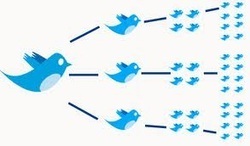 How to write tweets that go viral
How to write tweets that go viralWait a minute. Viral? Isn't that some kind of disease? Why would we want our Tweets to have a disease?
Well, no, it's not a disease but a good tweet - a viral tweet - will spread as fast as one.
Remember Kony? The aim was to make Kony so famous the whole world was aware of his crimes against children. And it worked. Love it or hate it, every man, woman and child in the known universe now knows who Kony is. And it all started on Twitter. They posted the video and then it went viral.
So what is viral and how does it work?
In a nutshell, it is when your tweet extends beyond your immediate audience.
Let's start small, to keep the math simple. For instance, say I tweet something. My 3500 followers read that tweet. Say 3 of my followers like my tweet enough to share it with their followers. Of those three, one has 100 followers. Another has 1000 and one has 10,000. My tweet is now being viewed by potentially 14,600 people. Say each of those three followers has three followers with the exact same numbers who find the tweet interesting enough to retweet. (My brain is starting to ache just thinking about this but let's give it a go). My original tweet is now being viewed by 59,000 people. And if their followers did the same thing, my Tweet would be viewed by.... Well, I'm a wordsmith, not a mathematician. But you get the idea.
Now imagine 10 of my followers retweeted my post, and in turn, each of those ten had 10 users retweet. Very quickly, your post could be viewed by millions.
So that's how viral works.
But how can you write a tweet that goes viral?
According to a 2010 study by Chadwick Martin Bailey the top 3 reasons people retweet are:
Because they found it interesting or entertaining (72%)Because they thought it would be helpful (58%)Because they thought it was funny (58%)
Emotions: Tap into people's emotions. If your tweet evokes an emotional response, people are more likely to retweet or respond in some way. You could be looking for a positive response or you could be looking for a negative response. It could be humorous, happy, angry, snarky or even sarcastic. Just don't be bland and boring.
Timing: It makes sense that if you post when people are online, that more people will read your tweets. Research shows that Tuesday mornings and Friday afternoons are the most popular times on Twitter. But that's where it starts to get a little complicated. Take me, for instance. I live in Australia but am seeking a global audience for my tweets. The largest number of my followers are based in the States, so if I want them to read my Tweets, I need to be posting Tuesday mornings and Friday afternoons their time. But wait - that's like 2am for me here in Oz. I don't really want to stay up until that time to make sure my Tweet reaches the largest possible audience, so what are my options?
I have started using Buffer to schedule my Tweets. Like all good Twitter apps, they have a free version and a paid version. For the moment, I'm satisfied with the free version. It allows me to schedule four tweets a day, spreading them out to post morning, noon, afternoon and evening. It also allows me to track how many people have retweeted and mentioned my tweet or clicked on the links. It gives me the numbers for how many potential people have seen my tweet. It's great stuff. Still, I don't want to only post 4 tweets a day, so I use this only to send out my key tweets. The rest - the general chit chat, the social interactions, the newsy retweets and information sharing - I do in real time.
There are dozens of other Twitter schedulers. Hootsuite is one. Click here to read The 6 top Twitter Schedulers.
Ask for Retweets:
Too simple? Statistics show that only 12% of posts that don't ask for a retweet are retweeted. On the other hand, 51% of Tweets that ask for a retweet get retweeted. Remember though to be polite, and don't expect them to retweet everything you post. It still has to be something of interest - something that makes them want to press retweet. Don't expect people to want to retweet all your sales pitches either.
If you want more information on writing Viral Tweets, check out http://upandrunning.bplans.com/2012/06/18/8-ways-to-help-your-tweets-go-viral/
In Part 3, we'll discuss:
Twitter Jail - what it is and how to avoid getting sent there. Twitter Lists - keeping track of who's who in your Twitter-Zoo. Using vulgarity on Twitter- the pros and consMarketing tips that do work on Twitter
If you have anything else you would like me to cover, put it in the comments and I'll try to fit it in.
Don't forget - if you don't already follow me on Twitter, I'd love to add you to my Twitter Party. I try to keep it fun and interesting for everyone. https://www.twitter.com/rileybanksbooks
Published on January 11, 2013 19:56
No comments have been added yet.



